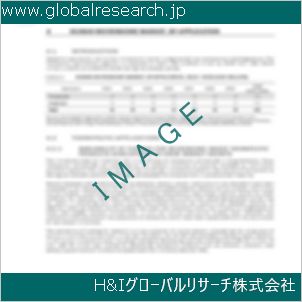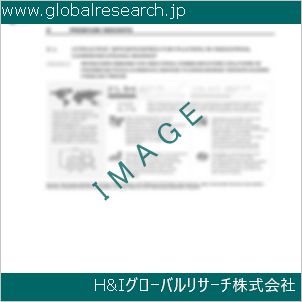Table of Contents
1 Industry Overview of P-Xylene
1.1 Definition and Specifications of P-Xylene
1.1.1 Definition of P-Xylene
1.1.2 Specifications of P-Xylene
1.2 Classification of P-Xylene
1.3 Applications of P-Xylene
1.3.1 Nuclear Application
1.3.2 Non-Nuclear Application
1.4 Industry Chain Structure of P-Xylene
1.5 Industry Overview and Major Regions Status of P-Xylene
1.5.1 Industry Overview of P-Xylene
1.5.2 Global Major Regions Status of P-Xylene
1.6 Industry Policy Analysis of P-Xylene
1.7 Industry News Analysis of P-Xylene
2 Manufacturing Cost Structure Analysis of P-Xylene
2.1 Raw Material Suppliers and Price Analysis of P-Xylene
2.2 Equipment Suppliers and Price Analysis of P-Xylene
2.3 Labor Cost Analysis of P-Xylene
2.4 Other Costs Analysis of P-Xylene
2.5 Manufacturing Cost Structure Analysis of P-Xylene
2.6 Manufacturing Process Analysis of P-Xylene
3 Technical Data and Manufacturing Plants Analysis of P-Xylene
3.1 Capacity and Commercial Production Date of Global P-Xylene Major Manufacturers in 2023
3.2 Manufacturing Plants Distribution of Global P-Xylene Major Manufacturers in 2023
3.3 R&D Status and Technology Source of Global P-Xylene Major Manufacturers in 2023
3.4 Raw Materials Sources Analysis of Global P-Xylene Major Manufacturers in 2023
4 Capacity, Production and Revenue Analysis of P-Xylene by Regions, Types and Manufacturers
4.1 Global Capacity, Production and Revenue of P-Xylene by Regions 2019-2024
4.2 Global and Major Regions Capacity, Production, Revenue and Growth Rate of P-Xylene 2019-2024
4.3 Global Capacity, Production and Revenue of P-Xylene by Types 2019-2024
4.4 Global Capacity, Production and Revenue of P-Xylene by Manufacturers 2019-2024
5 Price, Cost, Gross and Gross Margin Analysis of P-Xylene by Regions, Types and Manufacturers
5.1 Price, Cost, Gross and Gross Margin Analysis of P-Xylene by Regions 2019-2024
5.2 Price, Cost, Gross and Gross Margin Analysis of P-Xylene by Types 2019-2024
5.3 Price, Cost, Gross and Gross Margin Analysis of P-Xylene by Manufacturers 2019-2024
6 Consumption Volume, Consumption Value and Sale Price Analysis of P-Xylene by Regions, Types and Applications
6.1 Global Consumption Volume and Consumption Value of P-Xylene by Regions 2019-2024
6.2 Global and Major Regions Consumption Volume, Consumption Value and Growth Rate of P-Xylene 2019-2024
6.3 Global Consumption Volume and Consumption Value of P-Xylene by Types 2019-2024
6.4 Global Consumption Volume and Consumption Value of P-Xylene by Applications 2019-2024
6.5 Sale Price of P-Xylene by Regions 2019-2024
6.6 Sale Price of P-Xylene by Types 2019-2024
6.7 Sale Price of P-Xylene by Applications 2019-2024
6.8 Market Share Analysis of P-Xylene by Different Sale Price Levels
7 Supply, Import, Export and Consumption Analysis of P-Xylene
7.1 Supply, Consumption and Gap of P-Xylene 2019-2024
7.2 Global Capacity, Production, Price, Cost, Revenue, Supply, Import, Export and Consumption of P-Xylene 2019-2024
7.3 USA Capacity, Production, Price, Cost, Revenue, Supply, Import, Export and Consumption of P-Xylene 2019-2024
7.4 EU Capacity, Production, Price, Cost, Revenue, Supply, Import, Export and Consumption of P-Xylene 2019-2024
7.5 China Capacity, Production, Price, Cost, Revenue, Supply, Import, Export and Consumption of P-Xylene 2019-2024
7.6 Japan Capacity, Production, Price, Cost, Revenue, Supply, Import, Export and Consumption of P-Xylene 2019-2024
8 Major Manufacturers Analysis of P-Xylene
8.1 Manufacturer One
8.1.1 Company Profile
8.1.2 Product Picture and Specifications
8.1.2.1 Type I
8.1.2.2 Type II
8.1.2.3 Type III
8.1.3 Capacity, Production, Price, Cost, Gross and Revenue
8.1.4 Contact Information
8.2 Manufacturer Two
8.2.1 Company Profile
8.2.2 Product Picture and Specifications
8.2.2.1 Type I
8.2.2.2 Type II
8.2.2.3 Type III
8.2.3 Capacity, Production, Price, Cost, Gross and Revenue
8.2.4 Contact Information
8.3 Manufacturer Three
8.3.1 Company Profile
8.3.2 Product Picture and Specifications
8.3.2.1 Type I
8.3.2.2 Type II
8.3.2.3 Type III
8.3.3 Capacity, Production, Price, Cost, Gross and Revenue
8.3.4 Contact Information
8.4 Manufacturer Four
8.4.1 Company Profile
8.4.2 Product Picture and Specifications
8.4.2.1 Type I
8.4.2.2 Type II
8.4.2.3 Type III
8.4.3 Capacity, Production, Price, Cost, Gross and Revenue
8.4.4 Contact Information
8.5 Manufacturer Five
8.5.1 Company Profile
8.5.2 Product Picture and Specifications
8.5.2.1 Type I
8.5.2.2 Type II
8.5.2.3 Type III
8.5.3 Capacity, Production, Price, Cost, Gross and Revenue
8.5.4 Contact Information
…
9 Marketing Trader or Distributor Analysis of P-Xylene
9.1 Marketing Channels Status of P-Xylene
9.2 Traders or Distributors with Contact Information of P-Xylene by Regions
9.3 Ex-work Price, Channel Price and End Buyer Price Analysis of P-Xylene
9.4 Regional Import, Export and Trade Analysis of P-Xylene
10 Industry Chain Analysis of P-Xylene
10.1 Upstream Major Raw Materials Suppliers Analysis of P-Xylene
10.1.1 Major Raw Materials Suppliers with Contact Information Analysis of P-Xylene
10.1.2 Major Raw Materials Suppliers with Supply Volume Analysis of P-Xylene by Regions
10.2 Upstream Major Equipment Suppliers Analysis of P-Xylene
10.2.1 Major Equipment Suppliers with Contact Information Analysis of P-Xylene
10.2.2 Major Equipment Suppliers with Product Pictures Analysis of P-Xylene by Regions
10.3 Downstream Major Consumers Analysis of P-Xylene
10.3.1 Major Consumers with Contact Information Analysis of P-Xylene
10.3.2 Major Consumers with Consumption Volume Analysis of P-Xylene by Regions
10.4 Supply Chain Relationship Analysis of P-Xylene
11 Development Trend of Analysis of P-Xylene
11.1 Capacity, Production and Revenue Forecast of P-Xylene by Regions and Types
11.1.1 Global Capacity, Production and Revenue of P-Xylene by Regions 2024-2029
11.1.2 Global and Major Regions Capacity, Production, Revenue and Growth Rate of P-Xylene 2024-2029
11.1.3 Global Capacity, Production and Revenue of P-Xylene by Types 2024-2029
11.2 Consumption Volume and Consumption Value Forecast of P-Xylene by Regions, Types and Applications
11.2.1 Global Consumption Volume and Consumption Value of P-Xylene by Regions 2024-2029
11.2.2 Global and Major Regions Consumption Volume, Consumption Value and Growth Rate of P-Xylene 2024-2029
11.2.3 Global Consumption Volume and Consumption Value of P-Xylene by Types 2024-2029
11.2.4 Global Consumption Volume and Consumption Value of P-Xylene by Applications 2024-2029
11.3 Supply, Import, Export and Consumption Forecast of P-Xylene
11.3.1 Supply, Consumption and Gap of P-Xylene 2024-2029
11.3.2 Global Capacity, Production, Price, Cost, Revenue, Supply, Import, Export and Consumption of P-Xylene 2024-2029
11.3.3 USA Capacity, Production, Price, Cost, Revenue, Supply, Import, Export and Consumption of P-Xylene 2024-2029
11.3.4 EU Capacity, Production, Price, Cost, Revenue, Supply, Import, Export and Consumption of P-Xylene 2024-2029
11.3.5 China Capacity, Production, Price, Cost, Revenue, Supply, Import, Export and Consumption of P-Xylene 2024-2029
11.3.6 Japan Capacity, Production, Price, Cost, Revenue, Supply, Import, Export and Consumption of P-Xylene 2024-2029
12 New Project Investment Feasibility Analysis of P-Xylene
12.1 New Project SWOT Analysis of P-Xylene
12.2 New Project Investment Feasibility Analysis of P-Xylene
13 Conclusion of the Global P-Xylene (CAS 106-42-3) Industry 2024 Market Research Report
| ※参考情報 p-キシレン(P-Xylene)は、化学式C₈H₁₀を持つ芳香族炭化水素の一種で、同位体であるキシレンの一つです。特にp-キシレンは、二つのメチル基がベンゼン環の1位と4位に位置しているため、この名前が付けられています。p-キシレンは無色の液体で、揮発性が高く、特異な芳香を持つことが特徴です。 p-キシレンは、一般的に石油化学産業で重要な中間体として利用されています。特に、ポリエチレンテレフタレート(PET)やポリブチレンテレフタレート(PBT)の製造に欠かせない成分です。PETは、飲料ボトルや食品容器、繊維などの製造に広く使用されており、p-キシレンはその合成過程で重要な役割を果たします。 p-キシレンの特徴として、まずその化学的性質が挙げられます。高い熱安定性や化学的耐久性を持つため、多くの化学反応に対して安定しています。また、他の溶媒と比較して揮発性が高く、揮発性有機化合物(VOC)に分類されることが多いです。この特性は、環境保護や労働安全の観点から、取り扱いに対して注意を要します。 p-キシレンの生産方法には、主に二つの方法があります。一つは石油精製過程におけるナフサのクラッキングによるものであり、もう一つは芳香族化合物の脱水素化によるものです。これらの方法は、エネルギー効率やコストの面で異なる特性を持っています。近年では、再生可能なバイオ由来の原料からp-キシレンを製造する技術も研究されており、持続可能な化学産業への移行が期待されています。 用途に関しては、p-キシレンはその化学的性質を活かして多岐にわたります。家庭用清掃用品や塗料、接着剤、印刷インキなど、さまざまな製品の溶媒や成分として使用されています。そのため、p-キシレンの需要は世界的に高く、特にアジア地域においては化学工業の中心地として広く利用されています。 p-キシレンはまた、テレフタル酸と反応して、PETの製造に使用されるだけでなく、さらに改良されたポリマー材料の開発にも寄与しています。このような新しい材料は、軽量かつ強度が求められる産業用途で特に有望であり、持続可能なデザインの追求において重要な役割を果たします。 関連技術としては、p-キシレンを使用した触媒反応や化学変換技術が挙げられます。これらの技術は、より効率的な合成や、環境負荷の低減を目指すものとして注目されています。このように、化学産業の技術革新はp-キシレンの利用をさらに広げていく可能性があります。 環境への影響については、p-キシレン自身が揮発性有機化合物であり、大気中に放出されると環境負荷となることから、その取り扱いには十分な注意が求められます。p-キシレンの排出規制や、リサイクル技術の研究が進められており、持続可能な社会に向けた取り組みが進められています。 最近では、さらに持続可能な材料の開発も進行中であり、p-キシレンの替わりに使用できる代替物質を模索する動きも見られます。これにより、環境負荷の低い新しい化学プロセスの開発が期待されます。 最後に、p-キシレンの市場展望について述べると、世界的なプラスチック増産や化学製品需要の増加が予測されており、その結果としてp-キシレンの需要も増えると考えられています。このように、p-キシレンは単なる化学物質としての役割を超えて、産業界における重要な鍵を握っている材料であるといえるでしょう。 |
❖ 免責事項 ❖
http://www.globalresearch.jp/disclaimer












